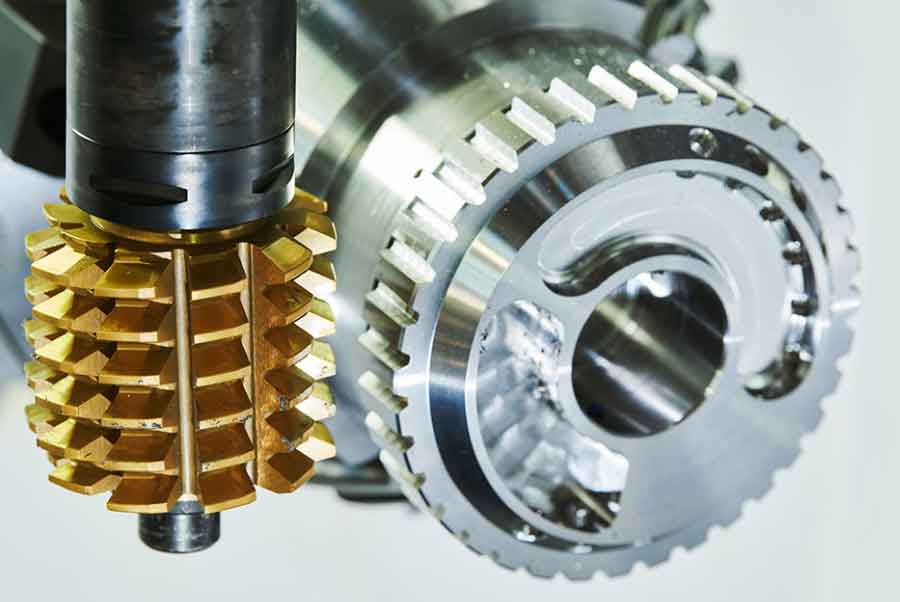
Gear hobbing is a widely used process for generating the teeth of gears. It involves the use of a specialized cutting tool called a hob to cut the tooth profiles into the gear blank. This article delves into the gear hobbing process, explaining the steps involved in generating gear teeth and highlighting the key elements that contribute to the accuracy and quality of the final gear.
I. Gear Hobbing Machine Setup:
The gear hobbing process begins with the setup of the gear hobbing machine. The machine is equipped with a hob, which is mounted on a spindle and positioned at the appropriate distance from the gear blank. The machine’s settings, such as the rotational speed of the hob and the feed rate, are determined based on the gear specifications and desired tooth profile.
II. Gear Blank and Hob Alignment:
The gear blank, typically a cylindrical or disk-shaped workpiece, is mounted securely on the machine’s spindle. The alignment of the gear blank and the hob is crucial to ensure accurate tooth generation. Proper alignment minimizes errors such as eccentricity and runout, which can affect the tooth profile and lead to poor gear performance.
III. Cutting the Gear Teeth:
Once the gear blank and hob are aligned, the cutting process begins. The hob is gradually fed into the gear blank, and as it rotates, it removes material from the gear blank to form the tooth profiles. The cutting action is achieved through a combination of rotational motion and axial feed. The hob’s teeth are designed to replicate the desired gear tooth profiles accurately.
IV. Generating the Tooth Profile:
As the hob cuts into the gear blank, it generates the tooth profile through a process known as generating. The hob’s shape and the relative motion between the hob and the gear blank determine the final tooth profile. The hob’s cutting edges gradually shape the gear teeth by removing material from the gear blank in a synchronized motion. This process ensures that the gear teeth accurately conform to the hob’s profile.
V. Continuous and Indexing Methods:
There are two primary methods of gear hobbing: continuous hobbing and indexing (or single-cut) hobbing. In continuous hobbing, the hob and gear blank rotate continuously during the cutting process, resulting in a continuous generation of gear teeth. In indexing hobbing, the gear blank is rotated intermittently, allowing the hob to cut one tooth at a time. Both methods have their advantages and are chosen based on factors such as gear complexity, production volume, and gear quality requirements.
VI. Chamfering and Deburring:
After the gear teeth are generated, chamfering and deburring processes are typically performed to remove any sharp edges or burrs left from the cutting operation. Chamfering involves cutting beveled edges on the gear teeth to facilitate smoother engagement with mating gears. Deburring removes any remaining rough edges or burrs to ensure the gear’s surface finish meets the required specifications.
VII. Quality Control and Inspection:
Throughout the gear hobbing process, quality control and inspection play a critical role. Regular measurements and inspections are conducted to verify the accuracy of the tooth profiles, tooth spacing, and other critical dimensions. Advanced measurement tools such as coordinate measuring machines (CMMs) and gear analyzers are used to ensure that the final gear meets the required specifications.
Gear hobbing is a precise and controlled process that enables the generation of accurate gear tooth profiles. By utilizing specialized hobs and carefully aligning the gear blank and hob, manufacturers can produce gears with precise tooth spacing, correct tooth forms, and optimal surface finish. The gear hobbing process, when executed with precision and complemented by quality control measures, ensures the production of high-quality gears for a wide range of applications.
